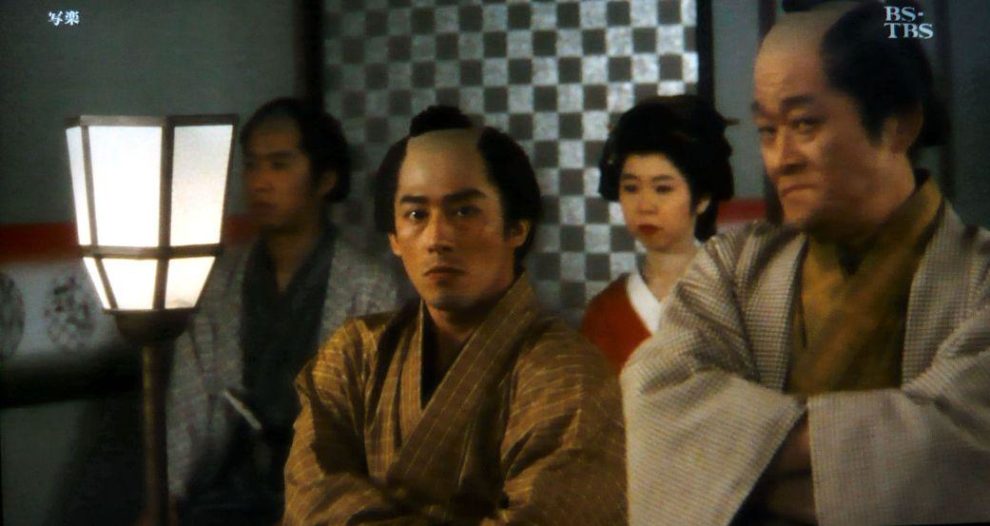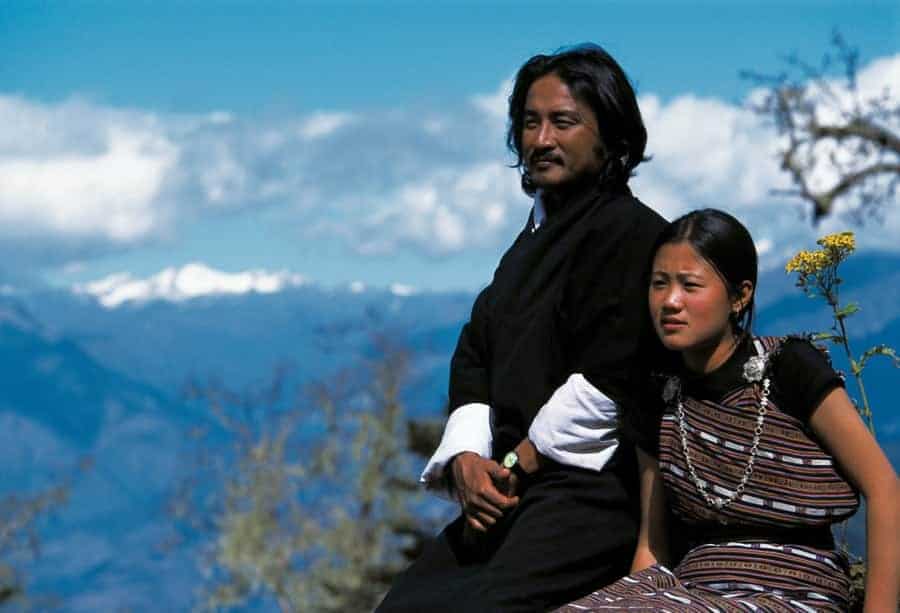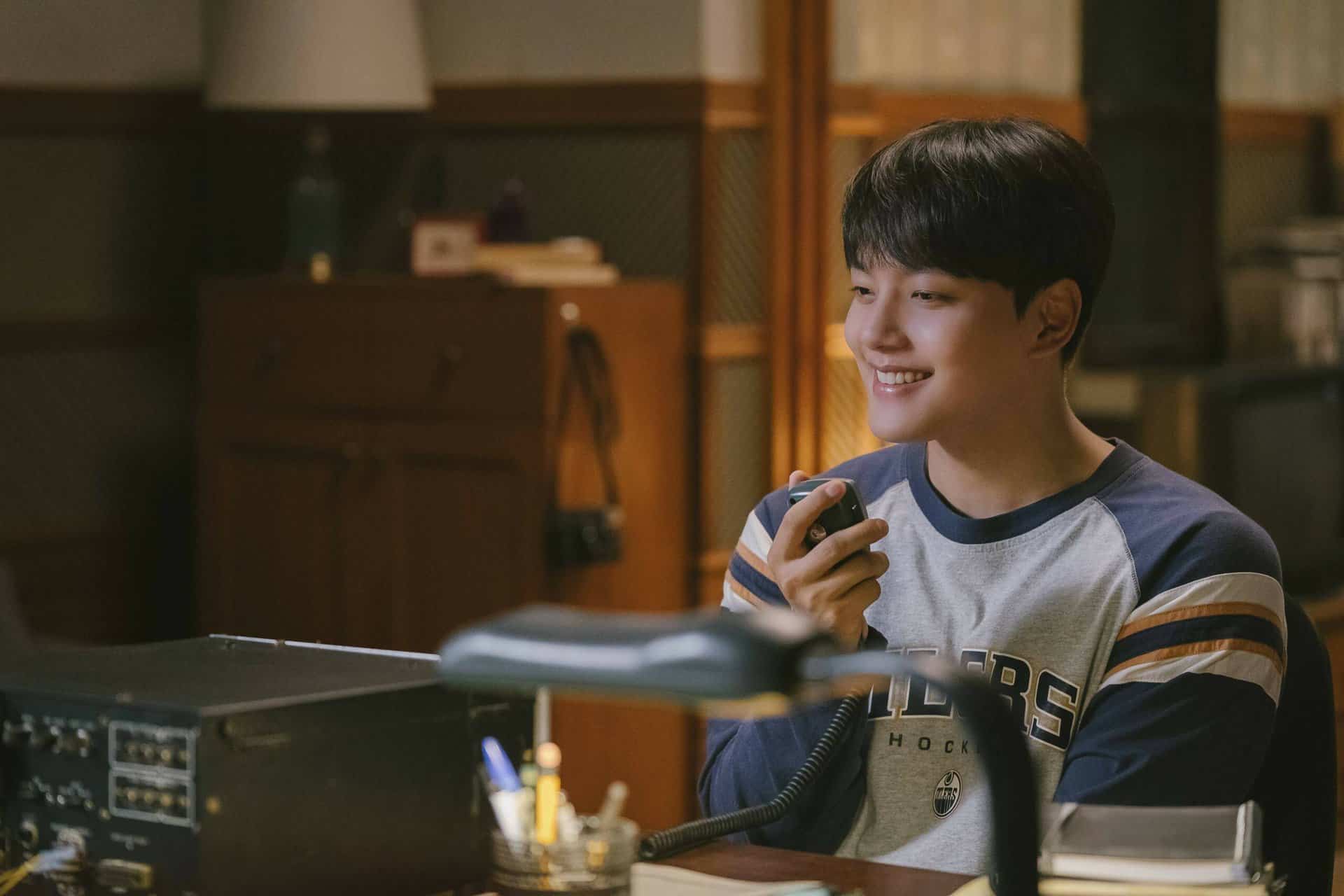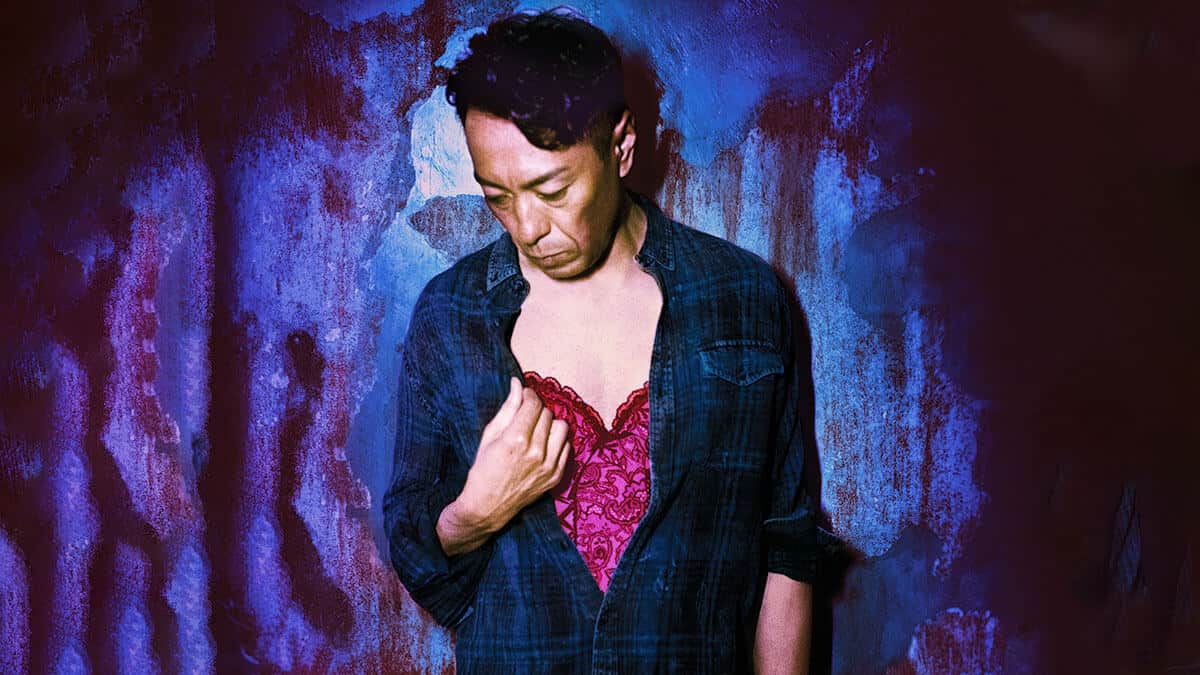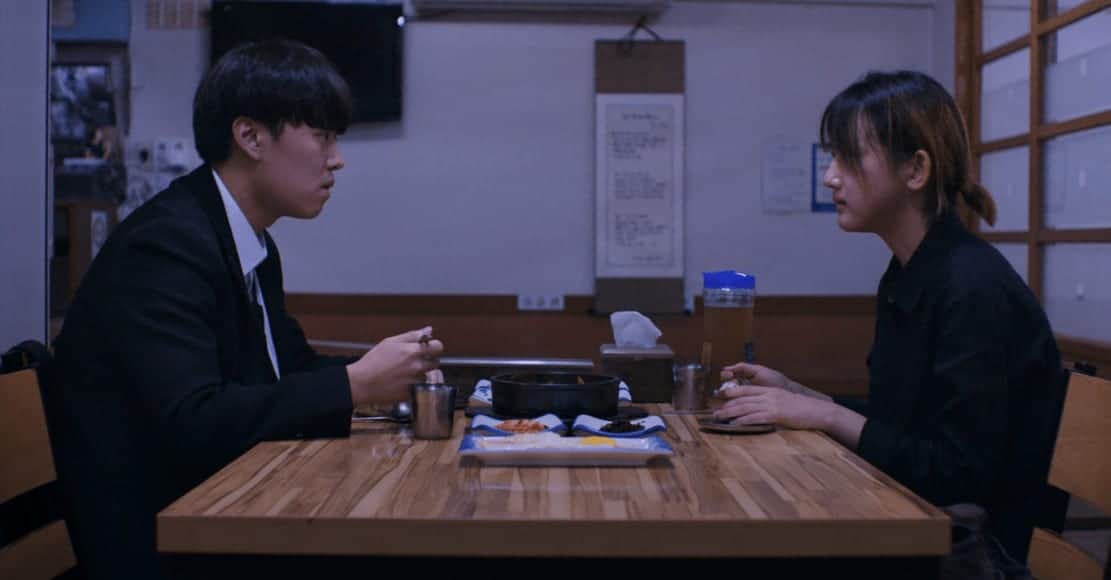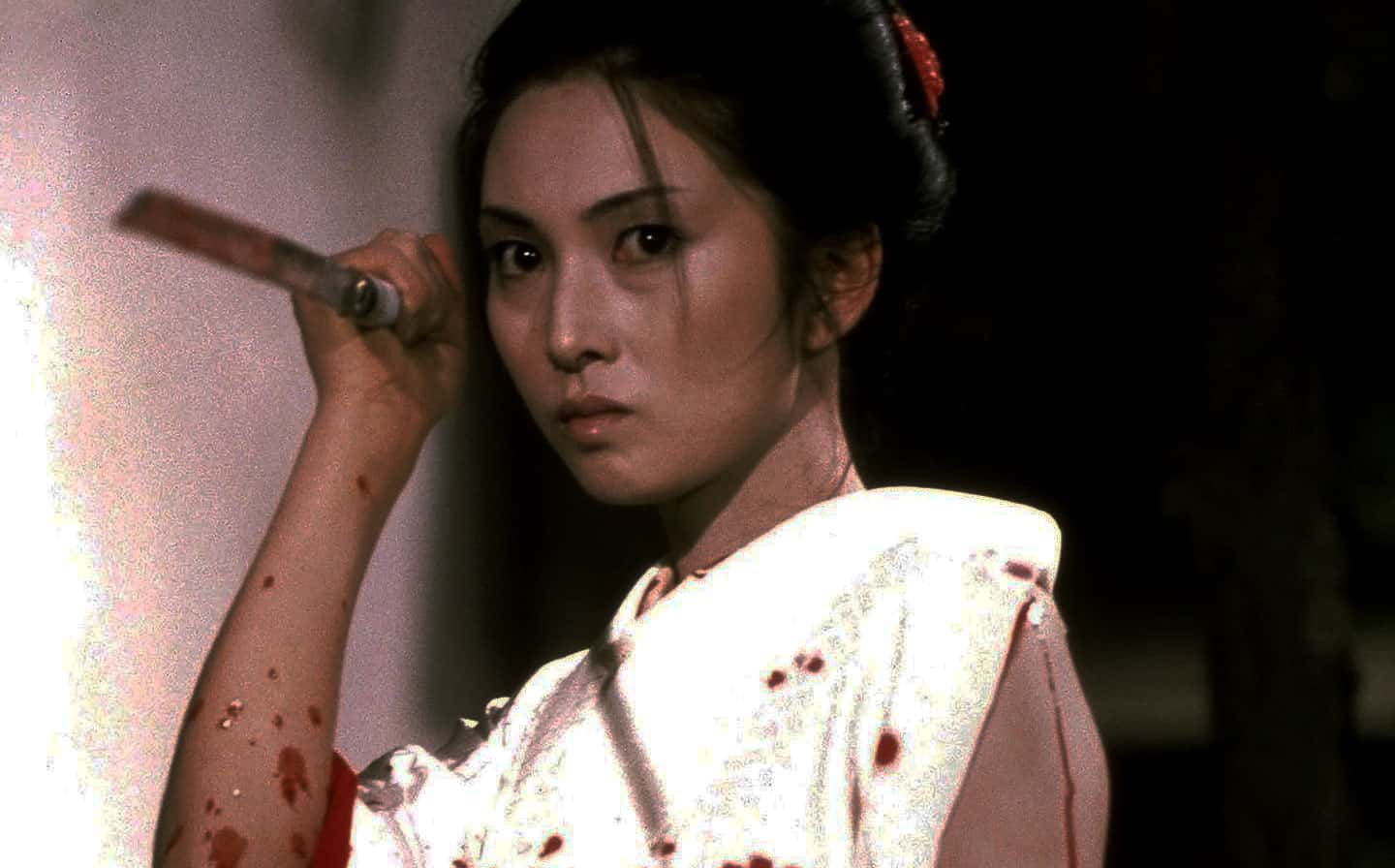Sharaku was a famous woodprint artist, of whom little is actually known. He worked for less than a year and produced some 140 prints, before he vanished from history, unidentified. Among those intrigued by the Sharaku mystery was the comedian Frankie Sakai, who wrote a book about him and spend nearly three decades to get someone to make the film. Eventually, he managed to get Masahiro Shinoda to direct and a producer willing to spend money, but the result was, unfortunately, marred by the chaotic script of pop writer Hiroko Minagawa (source: nytimes.com). Let us take things from the beginning though.
The story takes place in Edo in 1791, when the new government turned hard against all kinds of art, banning erotic works and all kinds of frivolity, including the one supposedly exhibited from Kabuki theatre. During that time, Tonbo, a kabuki stuntman of sorts, suffers an accident on a scene that leaves him with a damaged foot, and is somewhat bullied in joining a group of ragtag street performers.
Meanwhile, Tsutaya, a publisher, finds himself in deep trouble, both for filing a clearance form incorrectly and because his former apprentice and currently number one artist, Utamaro, leaves him for a rival house. In his despair, Tsutaya decides to print a series of woodblock paintings that will help both his company and kabuki theater, and begins searching for an artist to materialize his conception. A failed candidate eventually stumbles upon Tombo, who has also started drawing in a rather unusual way, and the ex-stuntman eventually becomes Tsutaya's main painter. The script includes a number of other subplots, with the most central one revolving around a local oiran, Hanasato, who seems to have feelings for Tonbo but finds herself hired by Utamaro.
Obviously having a big budget in his hands, Masahiro Shinoda focused on presenting the Edo era, along with the Kabuki and the art world in the most impressive way. In that regard, the art direction by Katsumi Asaba and Noriyoshi Ikeya, the costume design by Setsu Asakura and the overall work done in the sound, both in the interior and the exterior shots, is top-notch, while the whole era and all the concepts are captured impeccably by DP Tatsuo Suzuki.
However, while the “package” is quite appealing, the actual film is not. The plethora of twists do not allow any of them to be fully explored, essentially letting the movie become a collage of episodes, instead of a compact story. In that regard, the way the world of Kabuki, of geishas, of street artists and of the art world in general is painted with impressive but contextually rather dull colors. The effort of both Shinoda and editor Hirohide Abe to portray all of the aforementioned also blunders the particular aspect, with the film having a nice enough rhythm, which usually, though, leads to nothing.
In this setting, both the political comments about the government, the harshness of the dog-eat-dog art world where any kind of innovation was considered preposterous and the artists were considered slaves of their employers, and the fate of those who did not manage to get in the “inner circle” are barely visible, essentially lost in the chaos of the narrative.
This approach also faults the acting, with the cast suffocating inside a narrative that does not allow them to highlight their characters almost at all. The one who seems to suffer most is Hiroyuki Sanada as Tonbo, who only shines in his ability to perform as a street artist and in Kabuki. Frankie Sakai, who took the role of Tsutaya for himself emerges as a kind of caricature, while Shiro Sano as Utamaro appears unreasonably cool, in a role that seems to portray him as the villain.
In the end, what remains from “Sharaku” is the impressive images, including the impeccable beauty of Riona Hazuki as Hanasato, and a number of rather brutal scenes, including Tonbo's injury and the beating of a geisha who tried to escape, but not much more.


